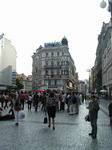
La Cittŕ Nuova di Praga si estende sull´orlo orientale e meridionale della Cittŕ Vecchia. Qui ci si trovano delle vie piů animate, piene di negozi ed i centri di commercio di Praga. The very centre of the city is represented by
the Wenceslas Square, main Prague's boulevard, with the magnificent 19
th century building of
the National Museum on the top.
In the area of the New Town there are concentrated many shops, restaurants, banks, churches and other important sacral and secular buildings of all architectural styles. Among numerous theatres noteworthy are especially historical building of
the National Theatre (1883) with the neighbouring New Theatre and the State Opera from 1887.
An important part of the area is also
Vysehrad - an old stronghold according to the legend the site of Libussa's castle, the cradle of Bohemian history. The first documentary reference however is from the 10
th century. The outer walls of the fortress have survived together with Romanesque
St. Martins's Chapel and the
Church of St. Peter and Paul later reconstructed in Gothic and neo-Gothic styles. Next to the church surrounded by arcades is the Vysehrad cemetery with the
"Slavin" (Pantheon) where many famous Czechs are buried.
The New Town, founded in 1348 by Charles IV., was carefully planned and laid out around
three large central market-places: the Hay Market, the Cattle Market and the Horse Market. It was inhabited by tradesmen and craftsmen such as blacksmiths, wheel wrights and brewers. It became the city's poorest quarter after the Jewish ghetto, renowned as a hotbed of Hussitism and radicalism throughout the centuries. During the late 19
th century, much ot the New Town was demolished and completely redeveloped, giving it the appearance it has today. It is the commercial centre of Prague, especially the so-called
"Golden Cross", made up of Wenceslas Square and Narodni and Na prikope, Prague's busiest shopping streets.
Wenceslas Square was originally a horse market. Today it is lined with hotels, restaurants, clubs and shops. It has witnessed many key events in recent Czech history. In 1969 student Jan Palach burnt himself to death and in November 1989 most demonstrations of the "Velvet Revolution" took place here.
The 750 meter long and 60 meter wide boulevard originates from the Charles IV. period when it was used as a Horse market.
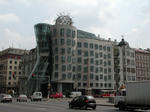
In the upper part of the boulevard the statue of St. Wenceslas (Vaclav) on his horse can be seen. It is the good king Vaclav, who was murdered by his brother over a thousand years ago, and who over the years has become the national hero. The artist J.V. Myslbek began to make this statue in the year 1884 and 36 years later it was finished.
Below it is
the statue of St. Wenceslas, the main patron saint of the country. Who knows, maybe that is the reason why the most important events have taken place here.
The New Town Hall, at the northem end of Prague's largest square, Karlovo namesti - the Charles' Square, named after the founder of this part of Prague, and covering an area of 80,000 square metres. First recorded reference to it dates from the second half of the 14
th century when it already had two two-storeyed wings, housing municipal offices as well as a prison. After several reconstructions it acquired its current appearance, with four wings and an arcaded courtyard. The two halls with reticulated vaulting on the ground floor are particularly remarkable. The building is the place where the first Prague defenestration took place on July 30, 1419. A crowd of followers of John Huss, led by the preacher Jan Zelivsky, then demanded the release of the jailed advocates of the Reformation. When the town councillors refused, the people stormed the town hall and threw them out of the window.
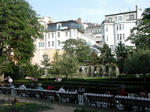
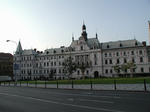
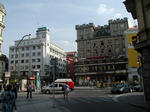
 Guide
Guide 





